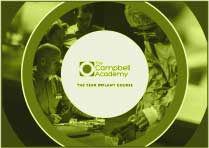
Whenever I'm given the opportunity to talk to someone else in my profession about the business of their business. One of my initial subjects always returns back to pricing questions.
We now live in a world where the vast majority of us are engaging at least in some form of private healthcare, as far as dentistry is concerned, either in the United Kingdom or in the wider world. And even though we will live in a world where we have some insurance-backed payments for some of us (the National Health Service in the United Kingdom, insurance-based welfare schemes in other countries), we will still be engaging in private pricing in some part of our business. And so, when the discussion comes up about how you are ‘setting your prices’, more often than not, and even more often than that, the question brings a blank face and no answer.
Setting prices is a complicated issue; it's something which has to be done systematically to be fair, ethical and honest. But it also has to have the ability to be adjustable at short notice, based on what is happening with supplier costs in the market overall and just in the general necessity to review your prices regularly at intervals which suit your business.
The Campbell Clinic now has a scheduled price increase (or a price review, but almost always an increase) twice yearly. Our practice management system allows us to increase the prices wholesale across the whole of the price estate. For example, if we decide to apply a 3% price rise in January, followed by a 4% price rise in August, that will give us a net price increase for the year of 7%.
This is a system that is relatively straightforward to set up, but it does not take into consideration what the prices were in the first place or the baseline pricing level. Setting the baseline pricing level can be complicated and time-consuming across the whole estate of your price products, but it's essential, meaningful and important work that's carried out to allow you to unconsciously begin to make a profit out of your business by charging the correct amounts.
It's not enough to say, “the guy down the road sells it for this, so I'll just do a little bit cheaper than that / dearer than that”, and not enough to say, “I think this is the market rate”.
Your prices should be calculated around a strict equation which starts with your operating surgery costs per day (the fixed cost for your surgery). There's not an awful lot of things you can do to change your operating surgery cost per day, assuming that you've not overspent on your fixed costs. If you have overspent on your fixed costs, you should think about changing that, because it will automatically increase your profitability.
The very first thing you should do though is know your operating surgery cost per day/hour because once you've figured that out, then you can figure out what the cost of sale is for the product that you wish to apply (the consumable cost for the materials, the additional materials or implant components, the cost of the associate, dentist, etc). And once you can have this, then you can decide how much profit margin you'd like to make, and then you can set your price.
If you were setting a practice up from scratch, you would do this with every single product that you have, and you would make a conscious decision to look at this. You would then review those prices accordingly, as we suggested above, but you would also review them yearly to see if there were any individual prices that needed to be increased.
Imagine you were running your whole price estate and planning a 3% increase, but your implant company had applied a 7% increase across the board to your implant products, which would automatically mean that if you did not increase by 7% on your implant products, you would be losing 4% of your previous possession.
A long time ago, when I worked in the hospital service, there was a project going on related to something called patient-level costing. They were effectively trying to review how much exactly any individual patient costs the hospital per exposure to the hospital.
I saw someone do this in dentistry once and it's fascinating, if you had the time (or the staff resource), you could figure out the profit/ loss that every single person had made.
Very few people have the will or the urge or the motivation or the money to do this, but to set your prices as above, to review them twice yearly and to make sure that your price estates are reviewed properly once yearly based around the cost of suppliers. It's an extraordinary way to make more money and to make your practice more effective and efficient without ever seeing a patient.





Leave a comment